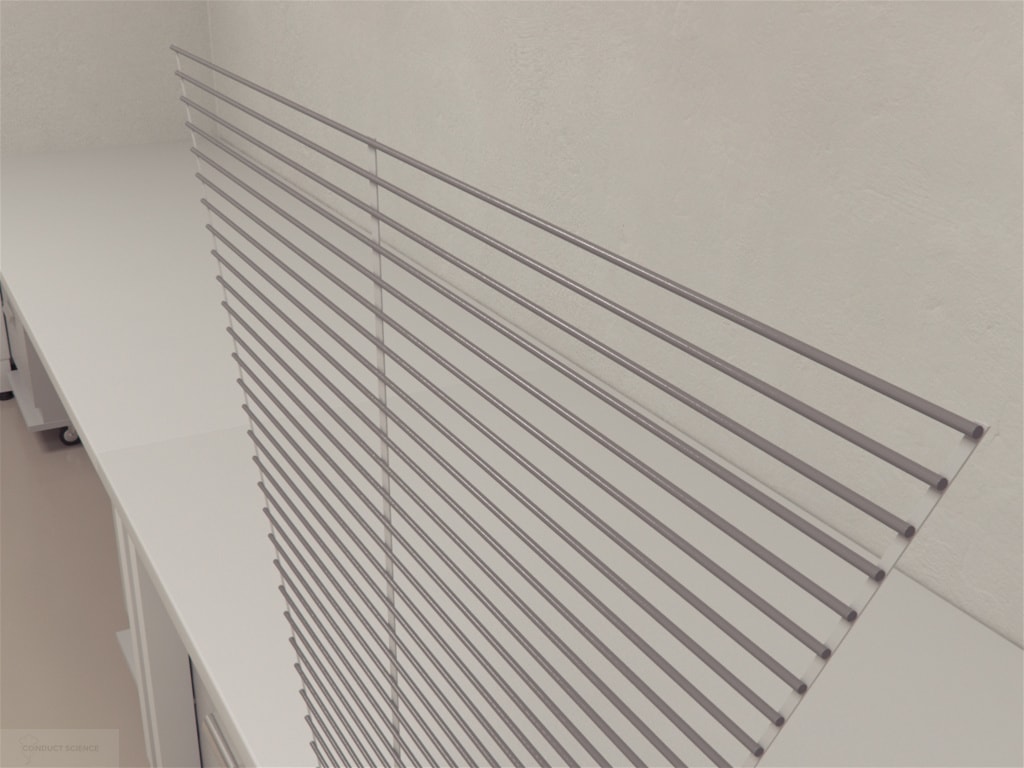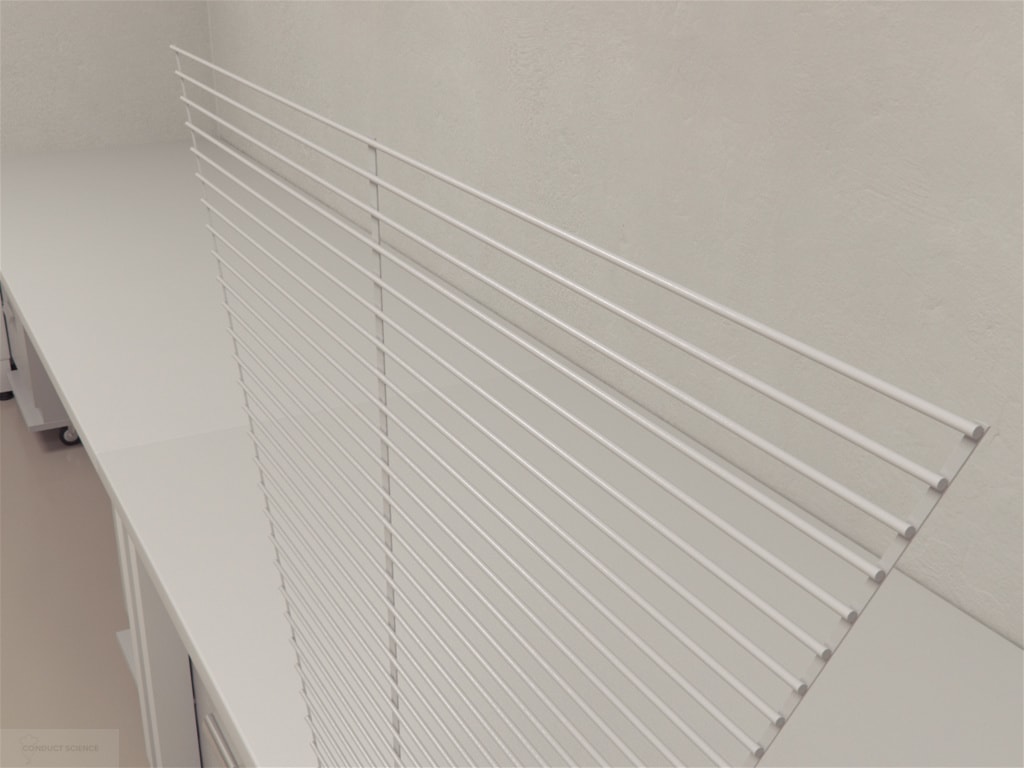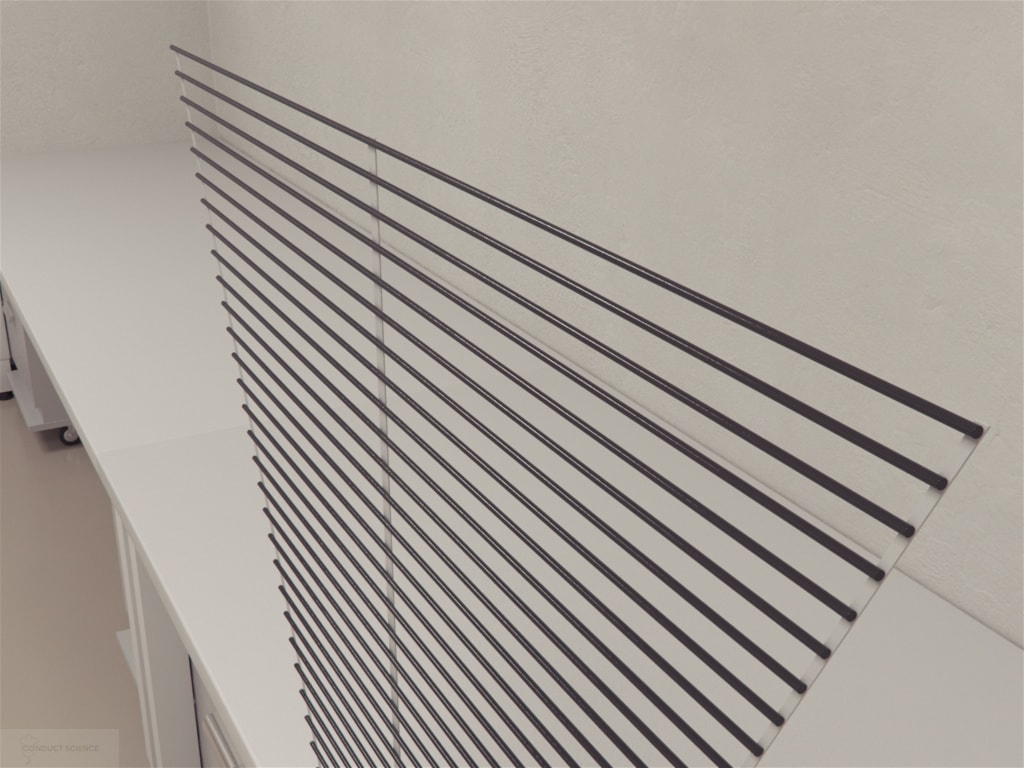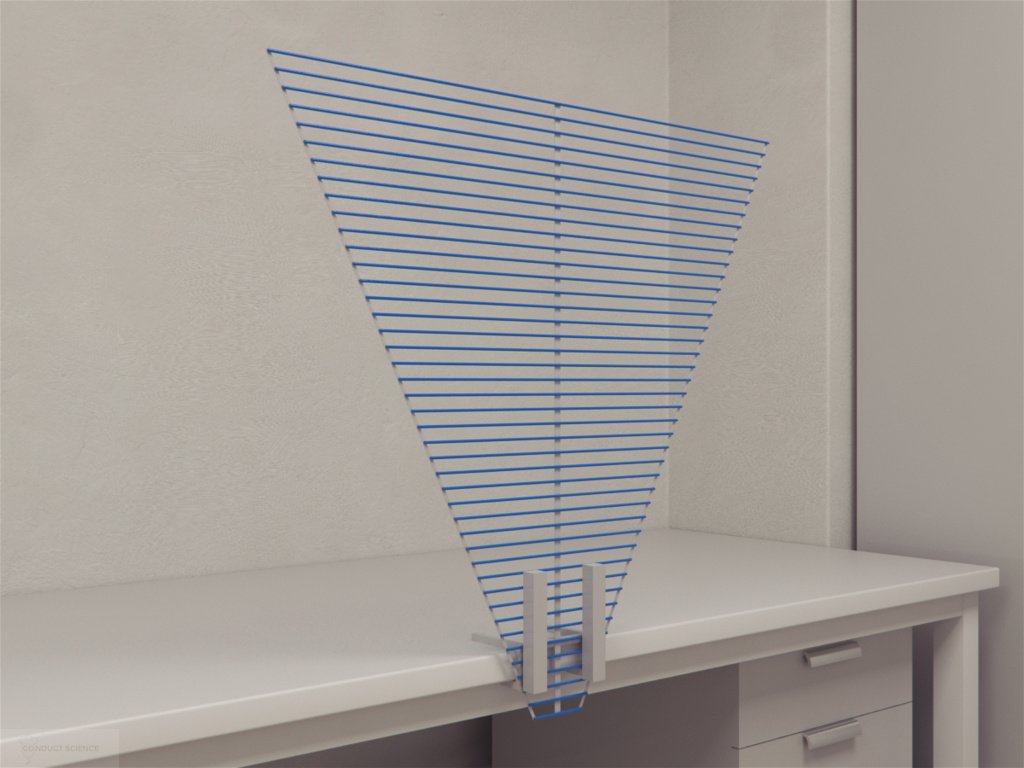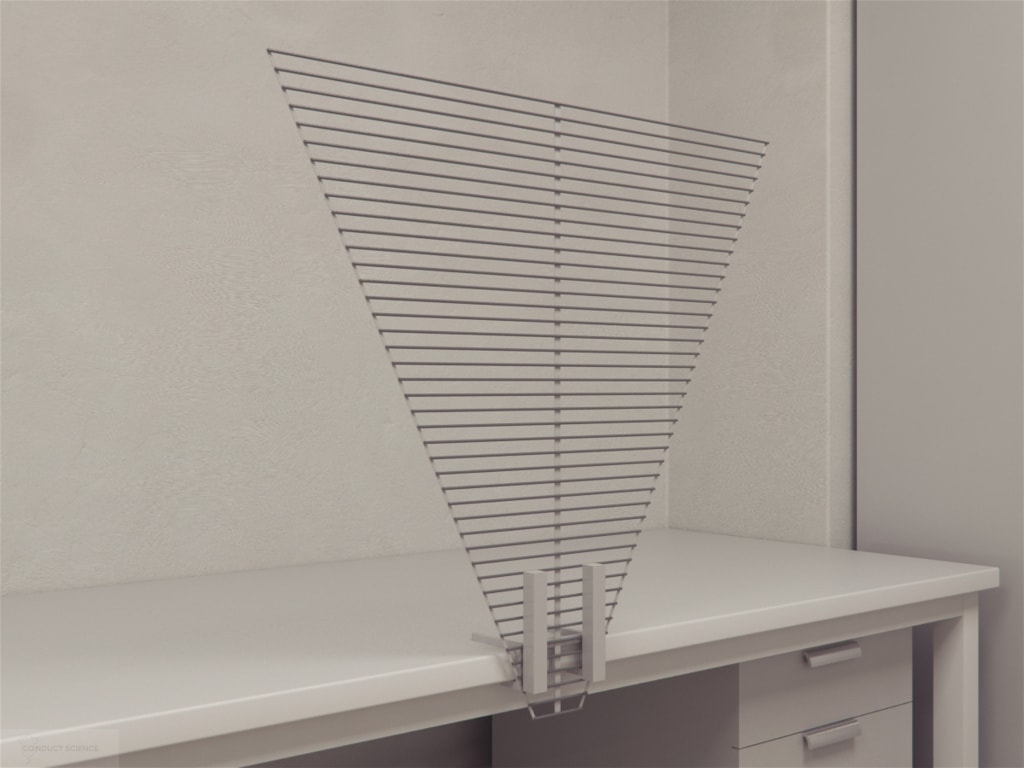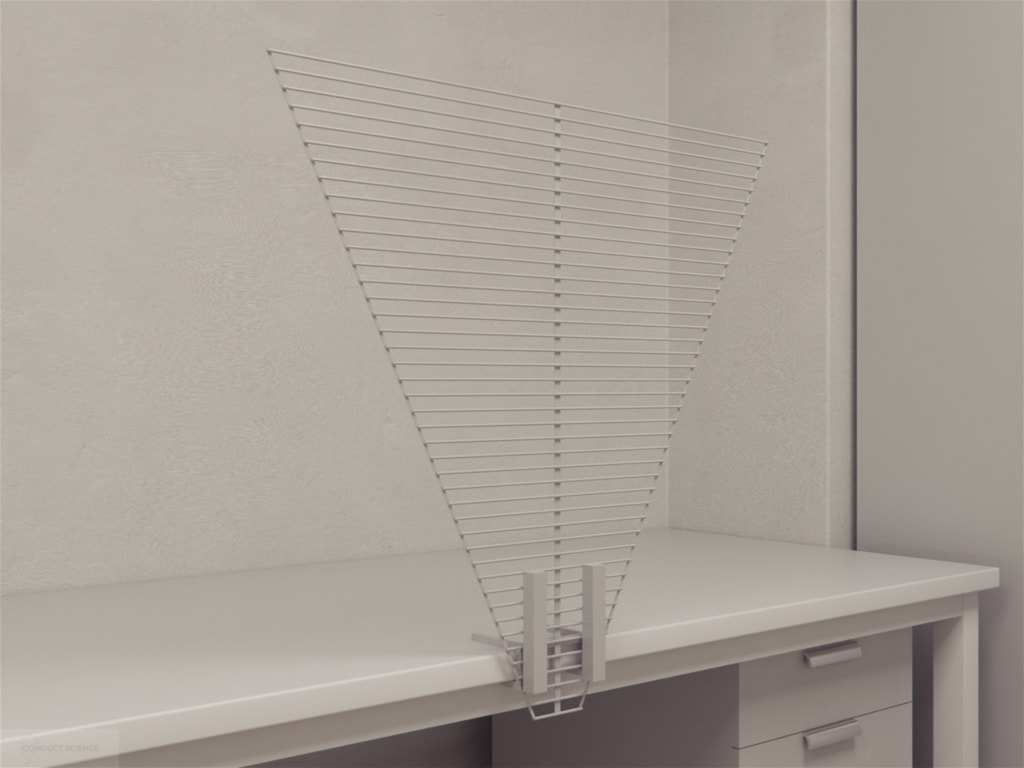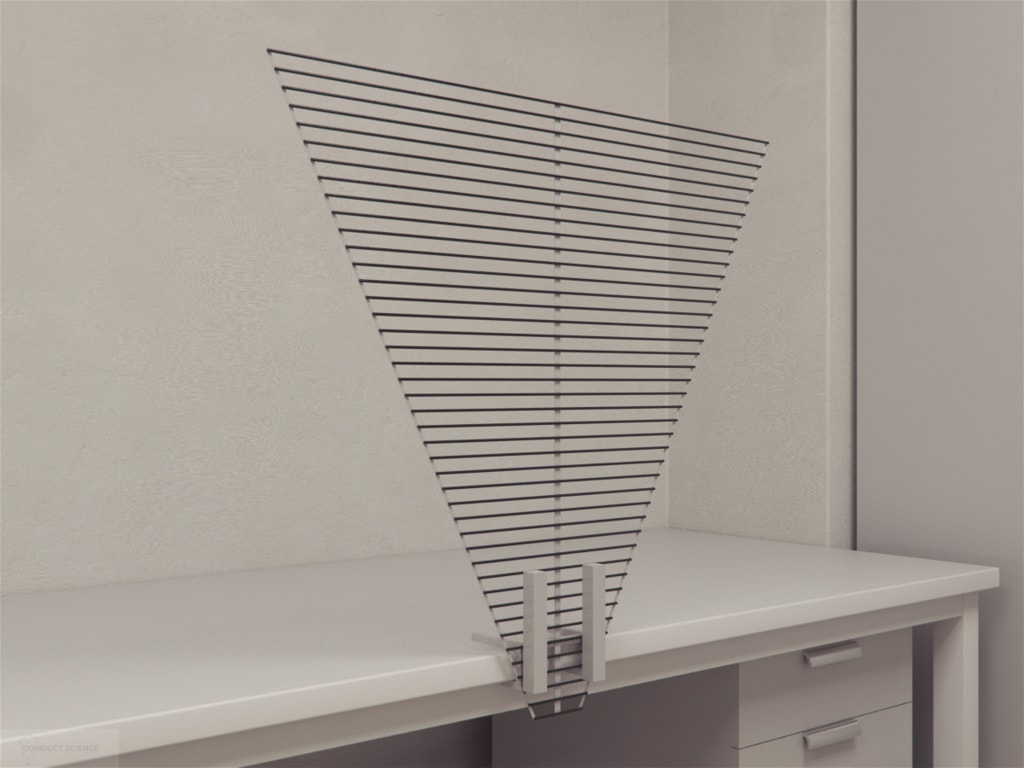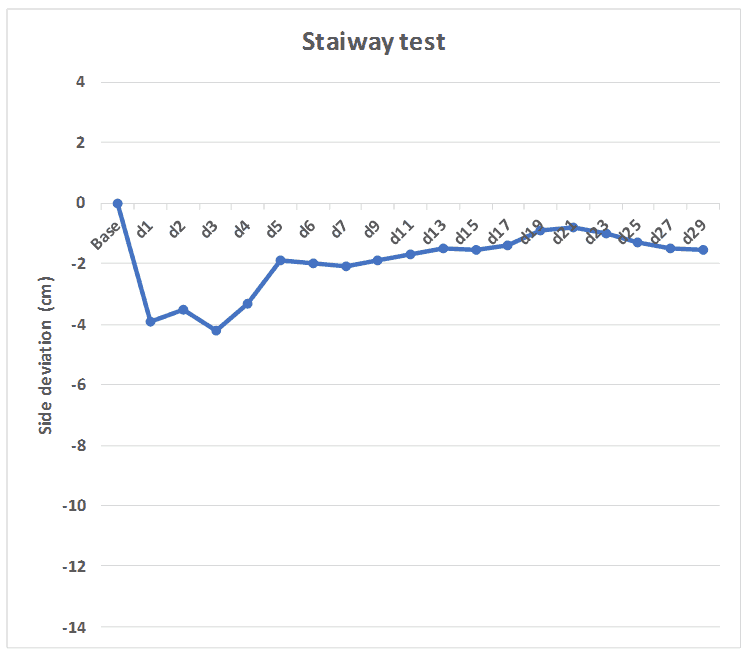The Stairway Test Apparatus originally described in the literature for MCAO stroke models in rats by Boltze et al (2006) in Germany. It is a robust, cost-effective, and highly reproducible, test system for evaluating motor lesions. multiple ladder rungs lead to a home cage environment. It requires little pretraining and is a more sensitive test for subtle perturbations in motor function.
Price & Dimensions
Mouse
$ 1890
Per Month- Rungs
- 28 rungs total
- 2.5 cm diameter, spaced evenly every 1.5 cm.
- Base of the triangle is 60 cm wide
- Length on both sides: 70cm
Rat
$ 1990
Per Month- Rungs
- 42 rungs total
- 4cm diameter, spaced evenly every 2 cm.
- Base of the triangle is 90 cm wide
- Length on both sides: 100cm
Documentation
Introduction
The Stairway test was first introduced by Boltze et al., 2006 to evaluate sensomotoric stroke deficits in rats. The novel apparatus requires short training phases of only 10-15 minutes and produces easily reproducible results. The apparatus allows evaluation of motoric and sensoric functions in rodents by requiring the subject to climb a vertically mounted triangular ladder. The ladder’s inclination is such that, the home cage at the top of the ladder is not visible to the subject. Thus, the subject must learn the position of the cage over the initial trials without further optical movement corrections.
Other similar behavioral tasks to the Stairway test include the Tilt Ladder, the Horizontal Ladder, Balance Beam, and the Rotarod. The most common motivation used in these behavioral tasks is the fear of falling, however, the Stairway task’s primary motivation comes from the home cage being placed at the top of the ladder. Since the stairway is almost vertically placed the subject is unable to see the home cage. Thus, unlike in other assays where the end goal is usually visible, the subject has to learn the position of the home cage over initial few trials. As opposed to the Rotarod, the Stairway test is a static apparatus.
Apparatus and Equipment
The Stairway apparatus includes a triangular ladder mounted vertically. The apex of the triangle forms the base of the ladder. The ladder has a height of 100 cm, and the largest rung is 90 cm wide. Each rung is of the diameter 0.4 cm and is placed at 2 cm intervals. In total 42 rungs make up the triangle ladder. The apparatus is usually placed at 80 to 90-degree inclination with the ground such that only the sides and ceiling are visible to the subject during the experiment.
Training Protocol
The Stairway apparatus is cleaned before and after every experiment. The apparatus is well-lit. Automated tracking and recording software such as Noldus Ethovision XT can be used to assist with the scoring.
The subject is placed on the first 20 cm of the ladder apex. The home cage at the top of the ladder serves as the source of motivation for the subject to climb up the stairway. The start position provides a direct route to the home cage. Subjects with impairments will usually deviate from the direct route. Each daily session consists of 5 trial that lasts about 10 seconds each. The subjects are housed under constant temperature conditions with ad libitum access to food and water.
Evaluation of human umbilical cord blood transplantation on motor performance
Artificial stroke is induced in the subjects through middle cerebral artery occlusion (MCAO). Subjects are randomly assigned to either cell therapy with HUCBC or phosphate buffered saline (PBS) injection 24 hours after stroke. Baseline variables are collected one day before the surgery. Subjects are tested daily for 7 days and then every alternate day over a period of 29 days (Boltze et al., 2006)
Sample Data
The Stairway test measures the deviation of the subject from the central point. A maximum deviation of 45 cm is possible on either side of the central point. The central point is marked as zero. The deviations to the right or left are marked as maximum of -45 cm and +45 cm respectively. Daily session data consists of the mean of 5 trials.
Strengths & Limitations
Strengths
The apparatus has a well-established efficiency in comparison to the RotaRod and modified neurological severity score(mNSS) assessed through balance beam. Although the Rotarod is the standard test used in motor deficit assessment, it tends to be expensive and time-consuming (14 days of conditioning is usually required). The Stairway test, on the other hand, is cost-effective and requires minimal training of about 10-15 minutes.
As opposed to other motor deficit tests, the Stairway test measures both motoric and sensoric functions. The Stairway test precisely reflects therapeutic benefits. In comparison to the Horizontal Ladder test, the Stairway test involves an element of gravity. Thus, it allows a better understanding of the motor deficits on the whole. Further, the Stairway test allows assessment of hemilateral impairments, which in rodents can be assessed by the curved path they take instead of the direct path to the home cage. Also, the primary motivation of the Stairway test is the home cage.
Limitation
Repeated trials on the Stairway will cause muscle fatigue in the subjects. The subject’s performance may also be dependent on its weight. Thus, it is important to have a large cohort of similar weights to obtain reliable results. It is important to allow rest periods between each trial. Factors such as the age and sex can also affect the performance. Subject’s own emotional and mental status can also influence the results. Improper placement of the subject on the rungs can also lead to erroneous results.
Summary and Key Points
- Stairway test was first introduced by Boltze et al. (2006) to evaluate sensomotoric stroke deficits in rats.
- The novel apparatus has short training phases and is cost-effective in comparison to other tests.
- The vertically mounted triangular ladder prevents the home cage from being visible to the subject while climbing, thus, requiring the subject to learn the position of the cage over the initial trials
References
Boltze J, Kowalski I, Förschler A, Schmidt U, Wagner D, Lobsien D, Emmrich J, Egger D, Kamprad M, Blunk J, Emmrich F (2006). The stairway: a novel behavioral test detecting sensomotoric stroke deficits in rats. Artif Organs. 30(10):756-63.


